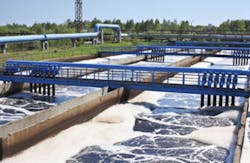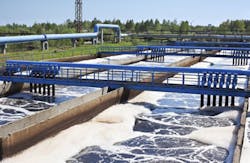Frost & Sullivan’s recent analysis, Membrane Technologies Market in Water and Wastewater Treatment in Southeast Asia, found the market earned revenues of $249.1 million in 2011 and expects this to reach $398 million by 2017.
“Earlier, a greater number of membranes were required to achieve a certain level of quality, but now the improved efficiency of membranes means that water and wastewater treatment facilities can lower investments in technologies,” says Frost & Sullivan Research Associate Prashanth Kay. “While the effectiveness of membranes is unchallenged, their compact and scalable features make them ideal for water and wastewater treatment, especially in desalination.”
Frost & Sullivan chose to study Southeast Asia, Kay says, because researchers realized this market was growing faster than expected. Since most Southeast Asian countries are not as heavily invested in water technologies as water-scarce countries, they wanted to learn the reason for growth. “I suppose in terms of trends—the reduction in costs due to increases in efficiency, and the pure effectiveness of membranes in treating water—crosses all geographic borders," Kay says.
The drivers for increased adoption of membrane technology in the North American water and wastewater industry are similar, according to Frost & Sullivan’s North America Energy and Environment Industry Analyst Eric Meliton. Namely, he says membrane growth is due to water scarcity issues on a regional basis, increasing demands on freshwater resources from industrial manufacturing sectors, and water stress in arid regions of the U.S. requiring ways to maximize freshwater resources.
“In contrast to Southeast Asia, North American municipalities and industrial participants already use a wide variety of advanced treatment systems, with membrane technologies being a major part of that,” Meliton says. “Demand is based on treatment need and procurement budget to implement and operate the treatment technologies utilized. Many larger municipalities and Tier I industrial participants have the financial means to implement advanced systems such as membranes, but smaller municipalities and Tier II/III participants have difficulties obtaining the funding required to implement these systems, thus relying on outdated treatment technologies in many cases."
While drivers may be similar across geographic boundaries, Frost & Sullivan notes that water effluent quality differs greatly among sectors of the water & wastewater treatment industry. For this reason, membrane technology companies are challenged to provide variations in technology to address these different needs, while keeping efficiency at the highest level and costs at their lowest.
Membrane vs. Conventional
While membrane technology has been around for nearly three decades, a large segment of the water & wastewater treatment industry still opts for the less expensive and conventional treatment systems. Conventional water treatment technologies typically involve a combination of treatment processes such as coagulation, sedimentation, filtration, and disinfection to achieve a certain quality of filtered water. While less expensive technologies and conventional systems are still widely used, they are slowly being replaced, Meliton says.
“Chemical feed systems come to mind as the technology being replaced by membrane technology and other advanced systems; however, outdated systems will still be prevalent in many municipal facilities that cannot generate the funding required to replace them outright," he says. “And in water-rich countries where water is cheap, the returns on investment from new technologies such as membranes are still unjustified.”
Membrane technology is generally viewed as part of an advanced treatment system, used to achieve a higher level of standardized water & wastewater treatment depending on application requirements. “In North America, membrane technology is used as a secondary treatment requirement, to address tougher contaminant levels in tandem with other treatment systems,” Meliton explains. “Contaminant type and level are key factors as to why a membrane system would be incorporated into existing treatment requirements.”



